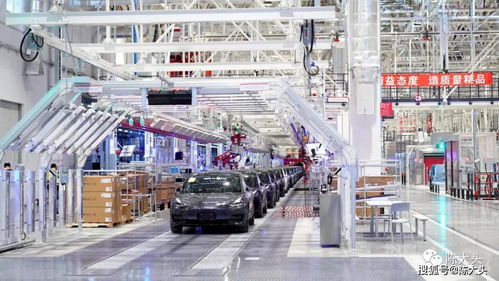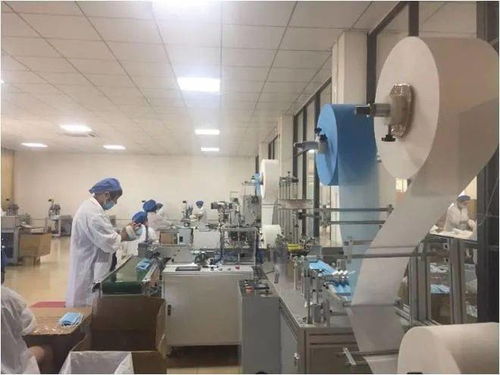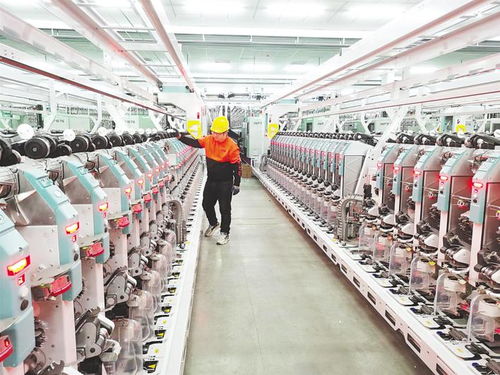The Transformative Journey of the Beijing Textile Factory:A Case Study
Introduction: The transformation of the Beijing Textile Factory is a testament to the power of innovation and sustainability. This industrial marvel, once a symbol of China's textile industry, has undergone a remarkable metamorphosis into a hub for sustainable fashion and eco-friendly production. In this article, we will explore the journey of the factory from its humble beginnings to its current status as a leader in sustainable textiles.
History: The Beijing Textile Factory was founded in the early 1950s by the Chinese government as a state-owned enterprise. It quickly became one of the largest textile factories in China, producing a wide range of clothing and accessories for the military and government officials. However, with the changing economic landscape and the growing demand for environmentally friendly products, the factory began to face challenges.
In the late 1990s, the factory faced unprecedented pressure to improve its production efficiency and reduce waste. This led to a series of reforms that transformed the factory into a modern, innovative organization. By 2000, the factory had achieved significant progress in terms of energy efficiency, waste reduction, and product quality.
However, the factory's journey did not end there. In 2014, the government announced plans to relocate the factory to a new location in the suburbs of Beijing. This decision was met with mixed reactions, but ultimately proved to be a necessary step towards the factory's future success.

Transformation: The relocation of the factory was a major turning point in the factory's history. The new location offered more space and resources for innovation, allowing the factory to focus on developing new products and technologies. The factory also benefited from the proximity to other high-tech industries in the area, which provided a wealth of opportunities for collaboration and knowledge exchange.
One of the key areas where the factory made significant strides was in its commitment to sustainability. The factory adopted a number of eco-friendly practices, such as using renewable energy sources, reducing water usage, and implementing recycling programs. These efforts not only helped to reduce the factory's environmental impact but also helped to establish it as a leader in sustainable fashion.
Another significant change was the introduction of digital technology. The factory invested heavily in automation and robotics to improve efficiency and reduce labor costs. This move allowed the factory to produce higher-quality products faster than ever before, while also improving its ability to monitor and control its operations remotely.
Case Study: To illustrate the transformative impact of these changes, let us take a closer look at the work of one of the factory's most successful projects: the development of eco-friendly fabrics. In 2017, the factory launched a new line of organic cotton fabrics, which were designed to be both comfortable and sustainable.
The development of these fabrics required a significant investment in research and development. The factory collaborated with several universities and research institutions to develop new techniques for dyeing and printing organic cotton fabrics. These techniques not only improved the quality of the fabrics but also reduced their environmental impact.
The launch of the eco-friendly fabrics was met with great success. They quickly became popular among consumers who were looking for sustainable alternatives to traditional textiles. The factory also saw a significant increase in sales, as customers were willing to pay a premium for products that were made from sustainable materials.
Conclusion: The transformation of the Beijing Textile Factory is a testament to the power of innovation and sustainability. Through its commitment to eco-friendly practices and digital technology, the factory has successfully transformed itself into a leader in sustainable fashion. As we continue to face challenges in the global economy, it is crucial that we embrace these transformative ideas and strive towards a more sustainable future.
北京作为中国的纺织重镇,近年来纺织厂改造工作备受关注,本文将围绕北京纺织厂改造为主题,通过案例分析、策略探讨以及图表说明,全面介绍纺织厂改造的背景、现状以及未来趋势。
纺织厂改造背景
近年来,随着国家对环保和节能的要求不断提高,纺织行业面临着转型升级的压力,北京纺织厂作为当地的重要产业之一,面临着设备老化、产能过剩、环境污染等问题,为了适应市场变化和行业发展趋势,北京纺织厂需要进行改造升级,提高生产效率、降低能耗、提升产品质量。
改造现状分析
- 设备状况:北京纺织厂现有设备老化,技术含量较低,生产效率不高。
- 产能过剩:由于市场竞争激烈,部分产品过剩,导致资源浪费。
- 改造目标:通过引入新技术、新设备,提高生产效率、降低能耗、提升产品质量,实现产业升级。
改造策略探讨
- 技术引进与升级:引进先进的生产技术和管理经验,提高生产效率和质量。
- 设备更新与改造:对现有设备进行升级改造,提高设备的技术水平和自动化程度。
- 绿色环保改造:加强环保设施建设,实现绿色生产。
- 人才培养与引进:加强员工培训,提高员工技能水平,引进高素质人才。
案例分析
以某北京纺织厂为例,该厂在改造过程中采用了多种策略和方法。
- 技术引进与升级:该厂引入了先进的生产技术和管理经验,提高了生产效率和产品质量,引入了自动化生产线和智能控制系统,实现了生产过程的智能化和自动化。
- 设备更新与改造:该厂对现有设备进行了全面的升级改造,包括更换老旧设备、引入新设备等,加强了环保设施建设,实现了绿色生产,该厂还建立了完善的设备维护和保养制度,保证了设备的长期稳定运行。
- 绿色环保改造:该厂在改造过程中注重环保和节能,加强了废水、废气、噪音等污染物的治理和排放标准,建立了完善的绿色生产体系,实现了资源的循环利用和再利用。
未来趋势分析
随着国家对环保和节能的要求不断提高,纺织行业面临着转型升级的压力,纺织厂改造将更加注重绿色、低碳、智能等方向的发展,纺织厂改造将更加注重技术创新和人才培养,提高生产效率和产品质量。
图表说明
以下为图表说明:
图表1:纺织厂改造前后设备状况对比图
(请在此处插入图表)
图表2:纺织厂改造目标与策略对比图
(请在此处插入图表)
北京纺织厂改造是一项重要的工作,需要综合考虑多种因素,在改造过程中,需要注重技术创新和人才培养,提高生产效率和产品质量,还需要注重环保和节能,实现绿色生产,纺织行业面临着转型升级的压力,纺织厂改造将更加注重绿色、低碳、智能等方向的发展。
Articles related to the knowledge points of this article:
Textile Workers Sisters:Unfolding the Hidden Stories of Industrial Hearths
The Story of Yingxiang Textile Factory
The Efficient Operation of Textile Factory Water Shroud Fan System



